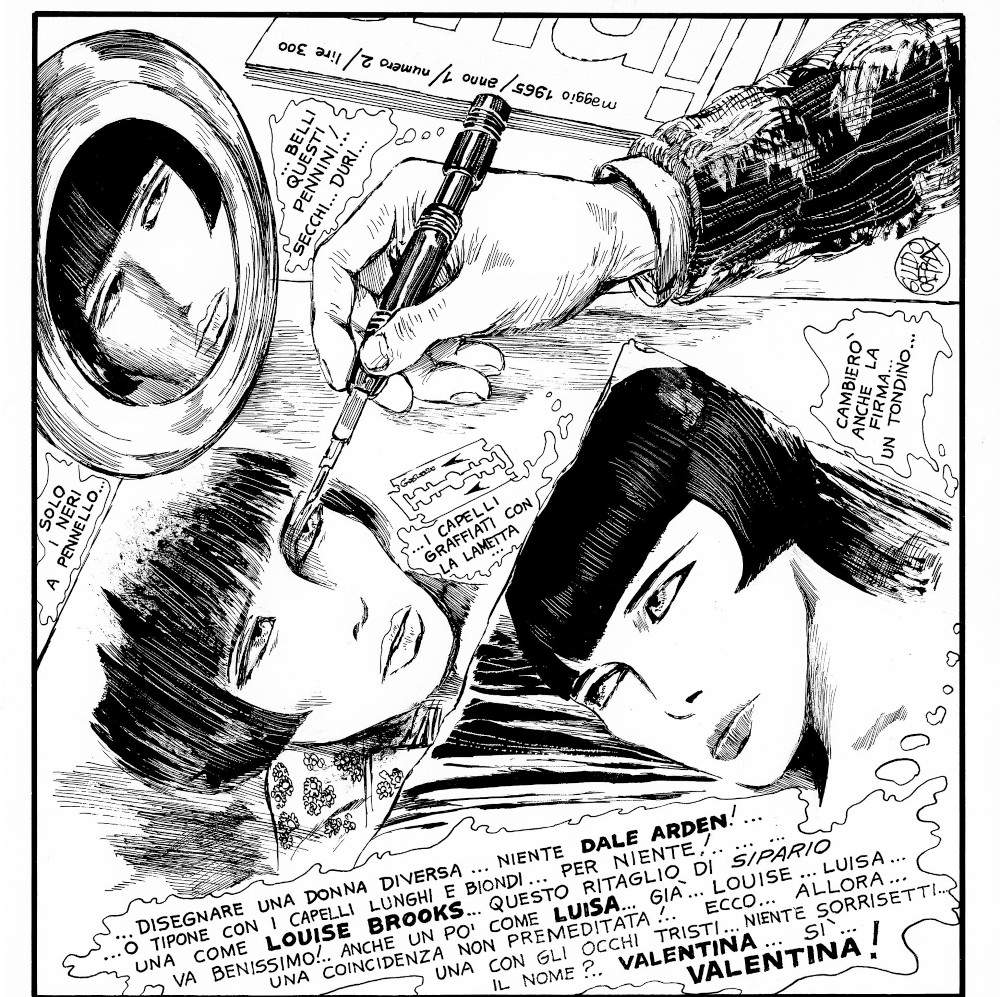Until October 31, 2021, the Saint-Bénin Center in Aosta is hosting the exhibition Guido Crepax. The Thousand Faces of Valentina, a solo exhibition dedicated to one of the most celebrated masters of auteur comics. Curated by Alberto Fiz in collaboration with the Crepax Archive, the exhibition is organized by the structure Exhibition Activities and Promotion of Cultural Identity of the Department of Cultural Heritage, Tourism, Sports and Commerce of the Autonomous Region of Valle d’Aosta.
More than one hundred works are on display within a layout specially designed for the Saint-Bénin Center. Along with the most significant original plates, the exhibition, divided into seven sections, offers the opportunity to analyze Guido Crepax ’s multifaceted artistic investigation by presenting unpublished archival documents, record covers, design and furniture objects, clothes, screens, studies for advertising, and large three-dimensional games.
A central role in the exhibition is given in particular to his most famous character, Valentina. The latter appears through a series of works that describe her absolute uniqueness in the history of comics since her image was born from the contamination between myth (actress Louise Brooks) and reality (his wife Luisa). The fusion of these two souls made it possible to develop a character that reflects the various aspects of the female universe.
Beginning with L’Uomo Invisibile, the first story drawn by Crepax when he was only twelve years old, the exhibition illustrates the artist’s beginnings characterized by a particular attention to Music (his father Gilberto Crepax was first cellist at the Fenice in Venice): since 1953 he has created more than three hundred record covers, some of which are featured in the exhibition. Music is a constant element in Crepax’s comics: in fact, there are many references to classical music (from Debussy to Stravinsky) as well as jazz (Parker and Gillespie). Another theme is the Games: Crepax had a passion for the historical reconstruction of events that are transformed into three-dimensional paths where, for example, the Piedmont battles of the Italian Campaign appear. There is no shortage of boxing games or those referencing Marco Polo’s travels.
Also very important are the themes of Cinema and Theater. His stories are real comic book film sequences with montages, shots and close-ups. References are continuous, from Eisenstein to Pabst, from Fellini to Truffaut. A specific section is devoted to Art and Literature, two other fundamental themes in Crepax’s work. As part of the exhibition, the events involving great masters such as Kandinsky or Moore (a story, The Fake Kandinsky and The Moore Syndrome, is dedicated to both), as well as Manet (the transgressive quote fromOlympia is on display), Magritte, Klein, and Fontana are documented. The dialogue also includes revisiting the great classics of literature involving, among others, Poe, Stevenson (of particular significance are the plates from Dr. Jekyill and Mr. Hyde), Diderot and the Marquis De Sade. Another innovative section is Fashion, Design and Advertising in which a series of clothes and objects made by Crepax with his iconic images including lamps, screens and ceramics are exhibited. Along with Valentina, the exhibition also analyzes the other female figures, from Bianca to Anita, who animate Crepax’s universe often characterized by a strong dreamlike component.
The exhibition concludes with a reconstruction of Crepax’s studio, Viaggiatore immobile, with his work table and the ever-present case of his father’s cello that appears in many of the comic book images. The wallpaper created for the fiction is produced where characters from the stories appear and a series of paradigmatic plates. The artist’s studio also features a 30-minute video where Crepax’s creative journey is narrated interspersed with a series of famous interviews.
Image: Table from the story “Twenty Years Later” (1980). The title Twenty Years Later refers to the fact that Valentina’s first story in Linus was drawn 20 years after the first comic strip story of the Invisible Man made in 1945 by Crepax when he was just 12 years old.
 |
| Guido Crepax and the thousand faces of Valentina: a solo exhibition on the famous cartoonist in Aosta |
Warning: the translation into English of the original Italian article was created using automatic tools. We undertake to review all articles, but we do not guarantee the total absence of inaccuracies in the translation due to the program. You can find the original by clicking on the ITA button. If you find any mistake,please contact us.